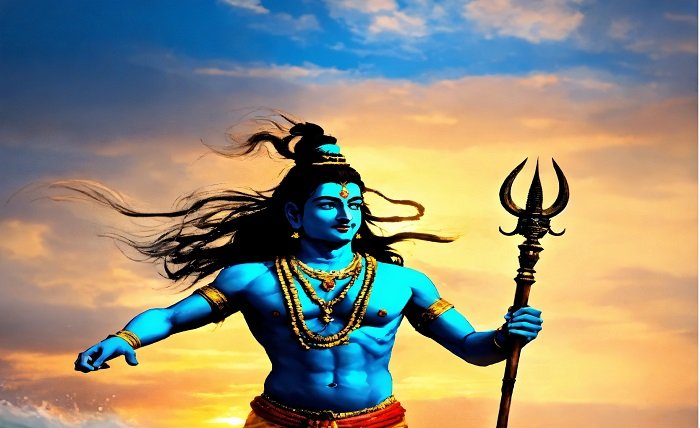Shivratri Kab Hai: Unveiling the Date, Significance, and Sacred Rituals of Mahashivratri 2025
The question “shivratri kab hai” echoes through the minds of millions of devotees as the spiritual year cycles forward. It is not merely a query about a date on the calendar; it is an anticipation, a preparation for one of the most significant and profound nights in the Hindu spiritual calendar – Maha Shivratri, the Great Night of Lord Shiva. This festival transcends a simple celebration; it is a deeply introspective journey, a cosmic event believed to be charged with immense spiritual energy that facilitates inner transformation. For those seeking divine connection, spiritual growth, or the blessings of the Adiyogi, the first step is always to ask, “shivratri kab hai” to mark their calendars and begin their sacred preparations. This blog post will not only answer that pivotal question for 2025 but will also delve into the rich tapestry of meaning, rituals, and science behind this magnificent observance.
What is Mahashivratri and Why Do We Ask “Shivratri Kab Hai”?
To understand the urgency behind the question “shivratri kab hai“, one must first understand what Mahashivratri represents. Unlike many festivals marked by daytime revelry, Shivratri is a nocturnal vigil, a night dedicated to awakening one’s inner consciousness. The term itself is derived from Sanskrit: “Maha” meaning great, “Shiva” representing the auspicious one or the consciousness of supreme goodness, and “Ratri” meaning night. It is believed that on this particular night, the planetary positions in the Northern hemisphere create a natural upsurge of energy, a powerful shift that is immensely beneficial for one’s spiritual and physical well-being. This is why devotees are so keen to know “shivratri kab hai” – they wish to align themselves with this natural energy boost. It is a night for fasting, prayer, meditation, and chanting, all aimed at moving from darkness to light, from ignorance to knowledge, and from despair to bliss. The question “shivratri kab hai” is, therefore, the first step on this transformative path.
Shivratri Kab Hai in 2025? Marking the Auspicious Date
The most immediate and practical answer sought by every devotee is, of course, “shivratri kab hai” for the coming year. The date of Mahashivratri is determined by the Hindu lunisolar calendar, specifically on the 14th night of the new moon (Krishna Paksha) during the dark fortnight of the month of Phalguna or Magha. In 2025, this immensely powerful night falls on Wednesday, February 26th. However, the rituals are not confined to just one day. The Nishita Kaal Puja time, which is the most auspicious window for performing the Shiva Abhishekam, will begin on the night of February 26th and extend into the early hours of Thursday, February 27th. Knowing the precise answer to “shivratri kab hai” is crucial because the specific timings (muhurat) for the puja are vital for maximizing the spiritual benefits of the observance. Devotees across the globe will be marking this date to partake in the night-long vigil, making offerings to the Shiva Lingam and immersing themselves in devotional practices.
The Profound Spiritual Significance Behind the Date
The reason the question “shivratri kab hai” holds such weight is due to the profound spiritual significance attached to this specific astronomical alignment. Hindu mythology offers several narratives that explain the importance of this night. The most popular belief is that it was on Mahashivratri that Lord Shiva performed the heavenly dance of creation, preservation, and destruction – the Tandava Nritya. Another legend states that it is the night when Shiva and Parvati were married, symbolizing the sacred union of the individual soul (Jeevatma) with the universal soul (Paramatma). Furthermore, it is also believed that during the great celestial event of Samudra Manthan (churning of the ocean), a pot of poison (Halahala) emerged that threatened to destroy the universe. Lord Shiva drank this poison and held it in his throat, which turned blue, giving him the name Neelkanth. Mahashivratri is celebrated as the day he saved the universe. Therefore, knowing “shivratri kab hai” allows devotees to commemorate these divine events and access the specific vibrational energy that this night offers for overcoming their own inner poisons of negativity, ego, and ignorance.
The Science of Shivratri: More Than Just Mythology
For the scientifically inclined, the recurring question “shivratri kab hai” might also have a logical, physiological basis. Yogic traditions have long emphasized the impact of planetary movements on the human system. The night of Mahashivratri corresponds to a specific period where there is a natural upsurge of energy in the human spine. The festival always falls in the late winter, a time when the body’s energy and immunity can be at a low. The rituals prescribed for Shivratri are designed to capitalize on this cosmic energy. Staying awake with a vertical spine (in meditation or prayer) helps a person to receive this natural energy uplift and maintain their health. Fasting helps in detoxification and cleansing of the body’s systems. Chanting mantras like “Om Namah Shivaya” creates a certain vibration that is known to activate certain energy centers (chakras) within the body. So, when someone asks “shivratri kab hai“, they are, perhaps unknowingly, seeking the date to participate in a practice that offers tangible benefits for both their physical and mental well-being, aligning their biological rhythms with the cosmic rhythm.
How to Observe Mahashivratri: Rituals and Traditions
Once you have the answer to “shivratri kab hai“, the next step is understanding how to observe it correctly. The traditional observance (Vrat) involves a day-long fast and an all-night vigil (Jagaran). Devotees visit Shiva temples to perform the ritual bath of the Shiva Lingam, known as Abhishekam. This is done with a variety of sacred offerings, each symbolizing a different prayer: water or Ganga Jal for purification, milk for purity and piousness, curd for prosperity and offspring, honey for sweet speech, ghee for victory, sugar for happiness, and Bael leaves (Bel Patra) for fulfillment of desires. Throughout the night, the mantra “Om Namah Shivaya” is chanted, and devotional songs and hymns are sung in praise of Lord Shiva. Many devotees also practice meditation throughout the night to calm the mind and connect with the divine energy. The entire process is a holistic spiritual exercise, and knowing “shivratri kab hai” allows one to mentally and physically prepare for this demanding yet rewarding spiritual marathon.
The Power of Fasting and Jagran on Shivratri
A central part of the answer to “shivratri kab hai” involves preparing for the fast (Vrat) and the night-long wakefulness (Jagran). The fast is not merely an act of denial but a tool for purification. It gives the digestive system a much-needed rest, allowing the body to focus its energy on spiritual pursuits. It is believed to cleanse the body of toxins and the mind of negative tendencies. The Jagran, or staying awake all night, holds equal importance. The night is symbolically a period of darkness, ignorance, and inertia (Tamas). By consciously remaining awake and engaged in prayer, one is fighting this inertia, cultivating awareness (Sattva), and striving for spiritual light. It is a symbolic resistance against the darkness within and without. The specific night identified by “shivratri kab hai” is considered the most potent night of the year for this practice, as the natural energies are most supportive of this inner work. The combination of fasting and Jagran creates a powerful container for spiritual awakening and receiving divine grace.
Beyond Rituals: The Inner Meaning of Shivratri
Ultimately, the quest to find out “shivratri kab hai” should lead one to the deeper, inner meaning of the festival. Lord Shiva is not just a deity to be worshipped externally; he is a symbol of the highest consciousness within every human being. The Shiva Lingam represents the formless, limitless nature of the divine. The rituals are external aids to internalize the mind. Fasting is a reminder to control the senses. The Abhishekam with various items signifies the cleansing of one’s own inner being—washing away anger, lust, greed, and ego. Staying awake is a metaphor for becoming more conscious and aware in one’s life. Therefore, Mahashivratri is an annual reminder to turn inward, to recognize and worship the Shiva consciousness within. It is a call to break free from the shackles of identification with the physical body and mind and to experience the boundless, tranquil space within. The date revealed by “shivratri kab hai” is thus an annual invitation to embark on this profound inner journey.
Conclusion
The simple question “shivratri kab hai” opens the door to a universe of profound spiritual depth, ancient wisdom, and transformative practices. In 2025, that door opens on Wednesday, February 26th. But Mahashivratri is far more than a date; it is a cosmic opportunity. It is a night designed for awakening, for shedding the old, and for connecting with the eternal source of creation within. Whether you are a devout follower adhering strictly to the rituals or a spiritual seeker intrigued by its inner meaning, observing Mahashivratri can be a deeply rewarding experience. So, mark your calendar, prepare your mind and body, and ready yourself to stay awake—not just physically, but in your consciousness—to receive the boundless blessings of Lord Shiva on this great night.
FAQs
1. Is there a difference between Shivratri and Mahashivratri?
Yes. While “Shivratri” refers to the monthly occasion that occurs on the 14th day of every lunar fortnight, “Mahashivratri” is the annual Great Night of Shiva that falls once a year, typically in February or March. It is this annual event that prompts the widespread question “shivratri kab hai“.
2. What should I eat if I am fasting on Mahashivratri?
A Shivratri fast typically involves consuming satvik food. Many people observe a Nirjala Vrat (without water), but others consume fruits, milk, Sabudana Khichdi, Singhare ke Atte (water chestnut flour) recipes, Kuttu (buckwheat) puris, and potato-based dishes. The key is to avoid grains, pulses, and non-vegetarian food.
3. Can anyone observe Mahashivratri, or is it only for Hindus?
The spiritual significance and practices of Mahashivratri are universal. Anyone, regardless of their religious background, can observe the day. The practices of fasting, meditation, and self-reflection are beneficial for all who wish to experience inner peace and well-being.
4. What is the most important mantra to chant on Shivratri?
The most potent and primary mantra dedicated to Lord Shiva is “Om Namah Shivaya”. Chanting this mantra 108 times or continuously throughout the night is considered extremely auspicious and powerful on the night of Mahashivratri.
5. Why is the Shiva Lingam worshipped with water and milk?
The Abhishekam (ritual bath) of the Shiva Lingam is symbolic. Water represents purity and the cleansing of the soul. Milk represents piety and compassion. Together, and with other items, they signify the devotee’s offering of their own qualities to the divine, seeking purification and blessings in return.





